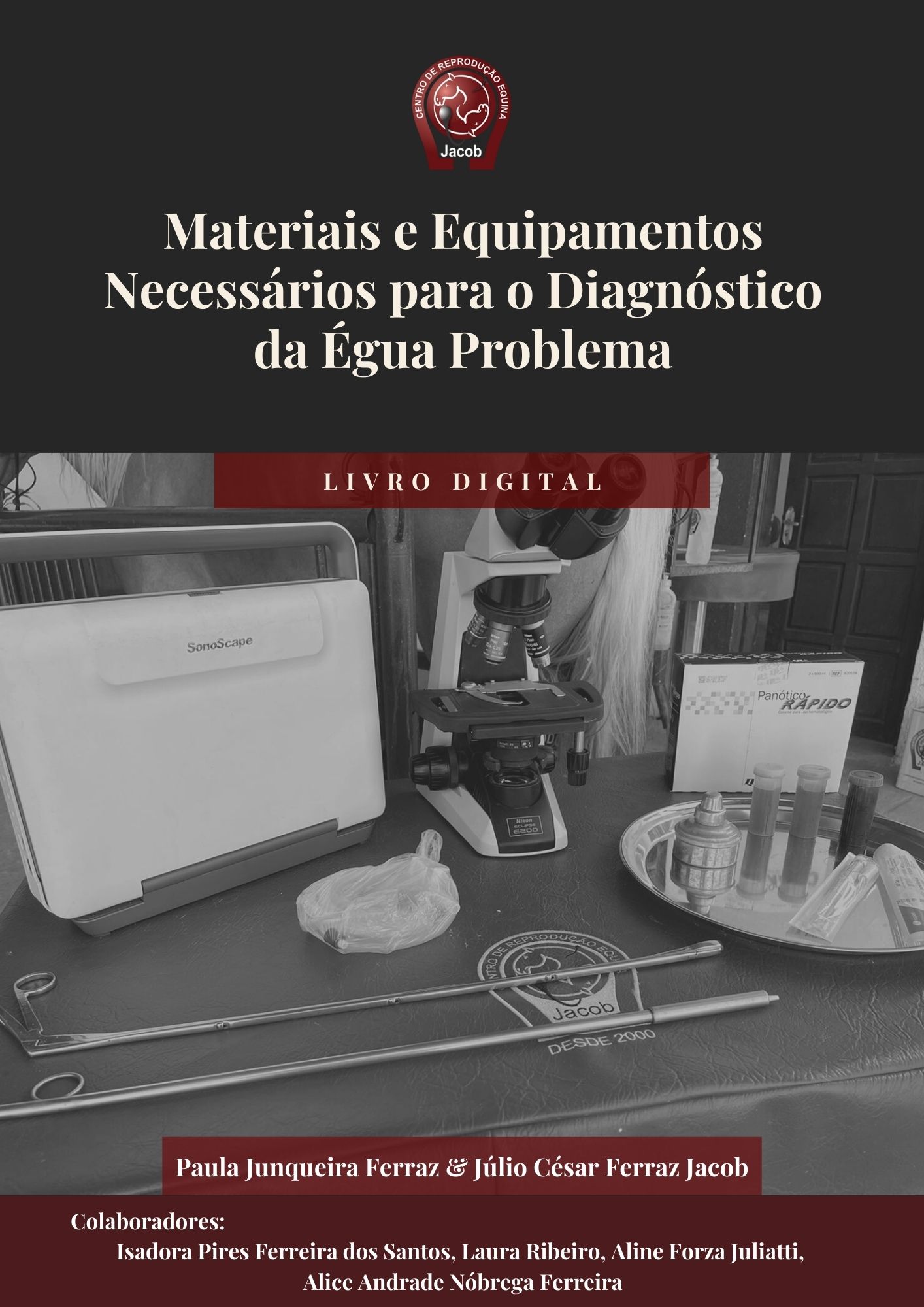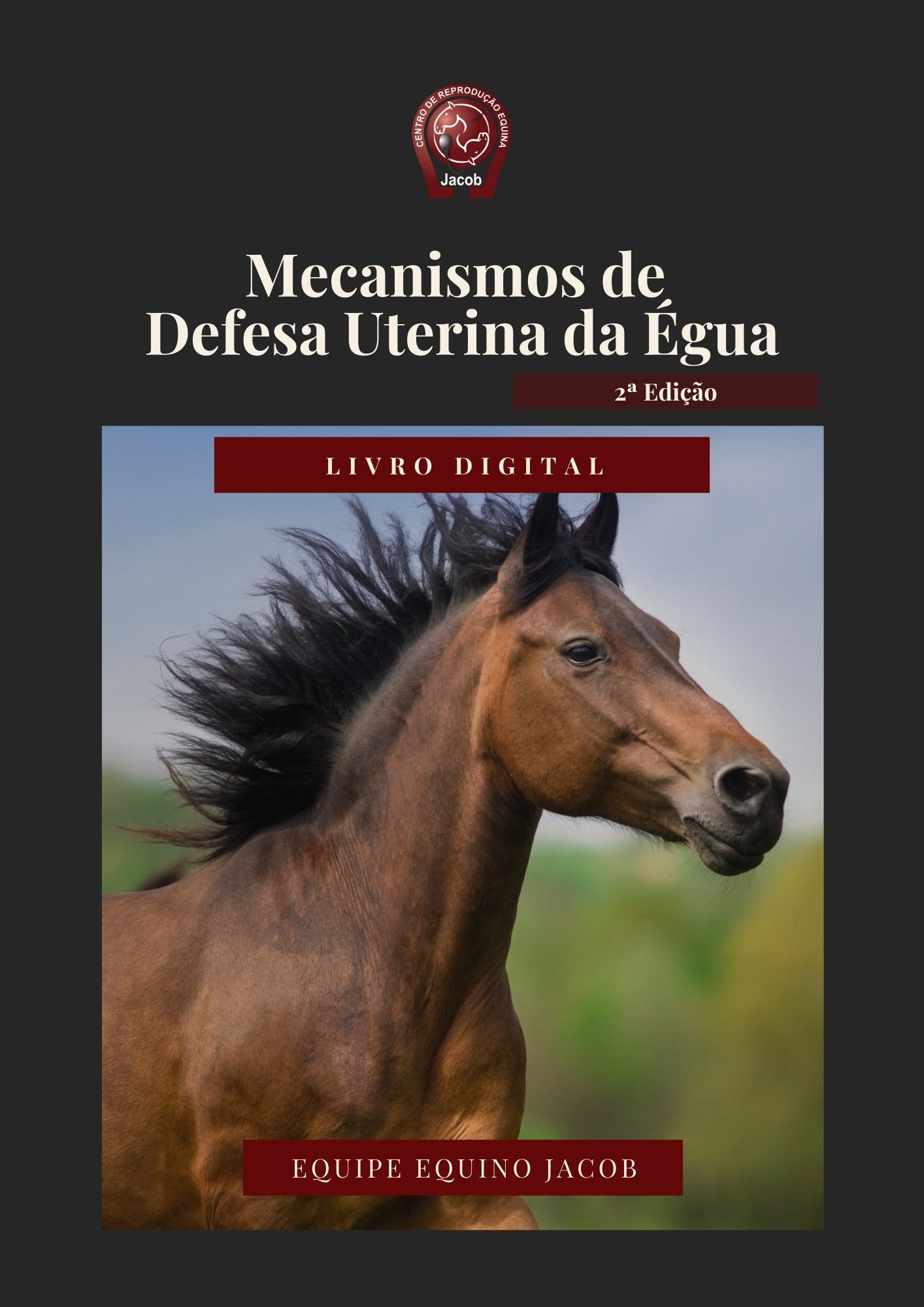M.A.F. Sá1, T.F.G. Lima1; G.A. Dutra1; V.L.T. Jesus1; C.G. Barbosa2; J.C.F. Jacob1
UFRRJ, Seropédica, RJ, Brasil
Palavras-chave: reação inflamatória; microbiologia; éguas susceptíveis.
O objetivo do presente estudo foi caracterizar através da ultrassonografia color Doppler a perfusão vascular endometrial de éguas com endometrite bacteriana submetidas a tratamento fitoterápico. Para tanto, foram utilizadas 20 éguas de raça mestiça e Mangalarga Marchador apresentando endometrite, confirmada através de exame microbiológico, citológico e ultrassonografia modo B. A perfusão vascular subjetiva do útero foi estimada levando-se em consideração o percentual de sinais Doppler colorido presentes no mesométrio, miométrio e endométrio, em corte longitudinal do corpo uterino e transversal dos cornos uterinos. Os animais foram divididos aleatoriamente em dois grupos: c = grupo controle (n=10) infusão com 100 ml solução salina 0,9% e t = grupo tratado (n=10) infusão uterina com solução fitoterápicaa 40% (100 ml) Fitoclean® (Organnact Saúde Animal, Paraná, Brasil). Em ambos os grupos, os exames de cultura uterina, antibiograma, citologia endometrial e ultrassonografia modo B e color Doppler foram realizados nos momentos T1 (imediatamente antes de iniciar o tratamento), T2 (24h após o tratamento) e T3 (48h após o tratamento). Para análise estatística, foi aplicado o teste t de Student e Anova para comparação das médias obtidas nos diferentes períodos e Qui Quadrado para avaliação do efeito do fitoterápico. No grupo controle, os valores médios e desvios padrões de vascularização no momento T1c, T2c e T3c foi 75,56±22,28%, 51,67±21,51% e 53,75±14,08%, respectivamente. Não houve diferença estatística entre os grupos controle e tratado nos diferentes momentos (p>0,05). No grupo tratado, os valores médios e desvios padrões de vascularização foram em T1t, T2t e T3t 69,50±14,99%, 39,00±15,24% e 32,00±16,19%, respectivamente. Os valores médios encontrados em T1 nos grupos controle e tratado foram significativamente superior (P<0,01) aos obtidos nos momentos T2 e T3. Em relação às amostras uterinas, no grupo controle, no momento T1c, 70% (7/10) apresentaram cultura, citologia positiva e presença de fluido intrauterino. T2c, em 50% (5/10) identificou-se crescimento bacteriano com líquido intrauterino e 100% (10/10) apresentaram citologia positiva; em T3c, os resultados foram semelhantes a T2c, com uma égua apresentando citologia negativa. Já no grupo tratado, no momento T1t, 90% (9/10) apresentaram crescimento bacteriano com citologia positiva e presença de fluido intrauterino; em T2t, 80% (8/10) das amostras uterinas detectaram a presença bacteriana, citologia positiva e líquido intrauterino; no momento T3t, 80% (8/10) identificaram crescimento bacteriano, 100% (10/10) apresentaram citologia positiva e 70% (7/10) com presença de líquido intrauterino. Não houve diferença estatística (p=0,2). Concluiu-se que foi possível utilizar a ultrassonografia color Doppler como método complementar de diagnóstico para a endometrite; porém, não foi possível correlacioná-lo com os achados nos exames tradicionais para diagnóstico da endometrite após o tratamento.
Evaluation of phytotherapy on equine endometritis using color Doppler ultrasonography
Keywords: Inflammatory reaction; microbiology; susceptible mares.
The objective of this study was to characterize using color Doppler ultrasonography the endometrial vascular perfusion of mares with bacterial endometritis submitted to phytotherapeutic treatment. For this, 20 mixed and Mangalarga Marchador mares presenting endometritis, confirmed through microbiological, cytological and B mode ultrasonography, were used. The subjective vascular perfusion of the uterus was estimated considering the percentage of color Doppler signals present in the mesometrium, myometrium and endometrium, in longitudinal section of the uterine and transverse body of the uterine horns. The animals were randomly directed into two groups: c- control group (n = 10) and t – treated group (n = 10) with phytotherapeutic solution Fitoclean® (Organnact Animal Health, Paraná, Brazil). In both groups, uterine culture, antibiogram, endometrial cytology and B mode and color Doppler ultrasonography were performed at T1 (immediately before the treatment), T2 (24h after treatment) and T3 (48h after treatment). For statistical analysis, the Student t and Anova test were used to compare the means obtained in the different periods and Chi Square for the evaluation of the phytotherapeutic effect. In the control group, mean values and standard deviation of vascularization at time T1c, T2c and T3c were 75.56 ± 22.28%, 51.67 ± 21.51% and 53.75 ± 14.08%, respectively. In the treated group, the mean values and standard deviations of vascularization were in T1t, T2t and T3t 69.50 ± 14.99%, 39.00 ± 15.24% and 32.00 ± 16.19%, respectively. The mean values found in T1 in the control and treated groups were significantly higher (P<0.01) than those obtained at moments T2 and T3. Regarding the uterine samples, in the control group, at the time T1c, 70% (7/10) presented positive culture, cytology and presence of intrauterine fluid. T2c, 50% (5/10) identified bacterial growth with intrauterine fluid and 100% (10/10) presented positive cytology; In T3c, the results were similar to T2c, with one mare showing negative cytology. In the treated group, in T1t, 90% (9/10) presented bacterial growth with positive cytology and presence of intrauterine fluid; In T2t, 80% (8/10) of the uterine samples detected bacterial presence, positive cytology and intrauterine fluid; At the time T3t, 80% (8/10) identified bacterial growth, 100% (10/10) presented positive cytology and 70% (7/10) with presence of intrauterine fluid. There was no statistical difference (p = 0.2). We can conclude that it was possible to use color Doppler ultrasonography as a complementary diagnostic method for endometritis; however, can not correlate it with the findings in the traditional exams to diagnose endometritis.
ARTIGOS RELACIONADOS



